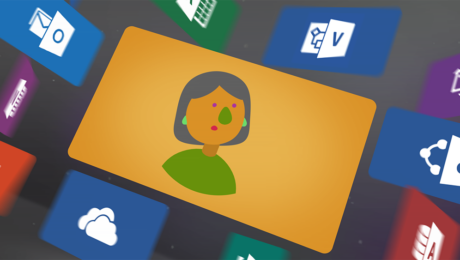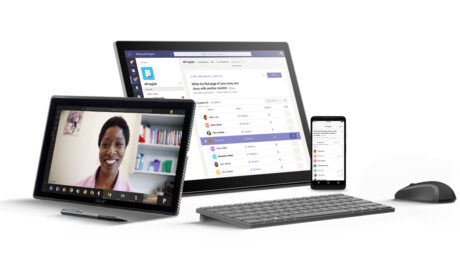Mehool Sanghrajka features in the month’s K12 Digest
We are delighted to announce that our CEO, Mehool Sanghrajka, is featured in this month’s K12 Digest. You can read his full article here.
- Published in Articles, Uncategorized
Webinar and Q&A : ‘A Learning Platform for the New Normal’
If you missed the Microsoft Webinar today, or simply want to review the contents, then welcome to our blog!
The full webinar can be found here.
During the webinar, we had a number of questions which we have answered below. If you have other questions, please contact us.
Q. Is the LP+365 platform free or paid?
A. LP is a cloud based subscription platform. During COVID19, we are currently offering schools the App for free. (Until September).
Q. How can I install LP+365 in my school?
A. Please visit our COVID offer page or contact us.
Q. Does LP+365 work on all browsers, including tablets and mobiles?
A. Yes, LP+365 works on all devices, including tablets and mobiles and supports modern browsers including Edge, IE, Firefox, Chrome, Safari etc.
Q. In remote areas can it be used offline?
A. Yes, LP+365 allows you to synchronise your files, notes, mail, calendars to be used offline. It will re-sync your changes when you are next online. We are currently working to expand this function.
Q. Does LP+365 support my language?
A. The user can select a language for his/her interface at any time from the languages available. If your language is not present, we can usually add it in a short time.
Q. Is this platform appropriate for four to seven-year old children?
A. Yes, the platform is designed to be used by students of all ages. We have seen learners from age 4, all the way to University.
Q. Do we need to sign up individually or through our school admin?
A. LP+365 works with a school’s Office 365 tenancy. The school therefore has to register and the portal will be accessible to all teachers and students at the school.
Q. Is this accessible if you have already your Microsoft account?
A. Yes, as long as the Microsoft account is through your school or college, you can register here.
Q. How can we teach pupils who are living in a far flung places?
A. LP+365 can be used to delivery resources to your class, manage assignments and start collaborative projects. Online classes can also be delivered using the integrated Teams and Skype functions.
Q. Are any certain Office 365 plans required to run this platform?
A. LP+365 works with all Office 365 educational plans, both free and paid.
Q. Is there an in depth demo of LP+365 available?
A. Please see the link to the Microsoft webinar above. In addition, our training videos explain every aspect of the LP+365 platform and can be viewed here.
Q. Can the platform be used for adult students?
A. Yes, the platform can be used by colleges, universities and vocational training colleges.
Q. How is the data submitted online safeguarded and not prone to hacking?
A. All data is encrypted at rest and in transit, using several strong encryption protocols, and technologies that include Transport Layer Security/Secure Sockets Layer (TLS/SSL), Internet Protocol Security (IPSec), and Advanced Encryption Standard (AES).
Q. How is Teams integrated within LP+365?
A. Teams in LP+365 offers teachers a virtual staffroom where they can communicate and collaborate. Teams also allows teachers the ability to have online classes.
Q. Can we set different types of assessments/assignments and also choose which students they go to?
A. Yes, the assignment tool allows you to set both formative and summative work, in many different formats, for individual students or the whole class.
- Published in Blog
CV3: the ‘New Normal’
This week’s announcement by Cambridge University that it will conduct classes online only for the 2020-21 academic year is significant as it signals the real timelines for this pandemic. Most of us have been living with the hope that by the summer, or September at the latest, we will be back to the ‘old normal’ that we knew at the start of this year. What Cambridge’s announcement does is move this timeline from weeks and months, to years.
The ‘new normal’, as its now widely being called, is a radical departure which will dictate our lives for many years. Until there is a viable treatment for this pandemic, social distancing and face masks/gloves will remain the norm, which means schools and colleges will have to learn to operate in new ways.
I suspect Cambridge’s announcement also took into account the inability for international students (on whom British Universities have built their economic models) to travel to the UK. Just how other industries that will find social distancing difficult (travel, hospitality, retail) will now sustainably operate is still unclear.
In the first of these blogs, I discussed how EdTech may actually benefit from COVID. We have certainly seen a dramatic increase in the number of countries discussing possible platform solutions. The biggest change over the discussions of last 20 years is that everyone now understands the need for ‘elearning’, ‘learning platforms’ and ‘learning from home’.
However, most education technology today has been procured on the basis that its there to support classroom teaching. The new normal requires technology that also supports learning from home. Whilst currently most schools are using a mixture of free tools and resources to continue supporting learning, these will need to be replaced, as I discussed in my second COVID blog, with long term solutions. Focus has therefore shifted to the large platform providers – Microsoft and Google.
In any case, whilst we have the global issues of population growth, environmental destruction and rising temperatures; as well as the social issues of growing human inequality, inhumane farming methods and regional conflicts, it seems to be very possible that such pandemics will also sadly become the norm.
As schools choose to open over the next few months, I think there are already some indicators of the direction we all need to take. I have listed my five below;
1. Firstly, schools will have to develop hybrid models for many months or even years. A combination of learn at home with some face-to-face teaching.
2. Secondly, this means that teachers will need support to become more familiar with technology, and in teaching learners remotely.
3. Thirdly digital skills will become even more critical; not just for learning from home, but in the new economy where working from home will also become the norm.
4. Fourth our exam systems, which were the first casualty, early in this pandemic, are unlikely to survive the pandemic and will need to be reevaluated.
5. Lastly, focus in education will move towards platforms, content, devices and connectivity as governments consider how to support all their learners.
- Published in Blog
Virtual Schooling, Virtual Campus: The Birth of Integrated Learning
It’s 2 months since the British economy and schooling system went into shutdown and longer for other countries in Europe and Asia. There has been uncountable number of articles, video, TV documentaries and analysis carried out on this new trend of “home schooling”, “virtual learning” or “digital transformation”. This is all to say that in a matter of months, the education system has transformed from being an onsite, face to face, classroom-based system to one that is carried at home, virtually over the internet.
While it may seem like this right now, to say that education has become virtual overnight is an insult to all those wonderful teachers and transformational leaders who had the vision over the past 10 – 15 years to create a more resilient system that strives to become ever more inclusive, and ever more accommodating for learners of different standards, abilities and interests.
What today looks like virtual learning and virtual schooling is actually one element of an integrated learning program coming to the fore and becoming visible to all (and for the first time to some). The advances in technology infrastructure has definitely helped in some countries, but in other countries despite the lack of good technology infrastructure, the vision, foresight and perseverance of countless number of teachers and education ministers to integrate technology, however basic, is bearing fruit today.
Some governments like the visionary government of Wales in 2010 created a vision for digital wales, creating a world class technology platform called Hwb that for the first time across the four British nations, and worldwide, created a national education system that integrated digital (online) and physical (offline) education delivery. Considered a world leading initiative by many education experts, the main outcome following almost a decade of use, from today’s perspective is that students & teachers across Wales are far more comfortable and at ease using technology to enhance delivery.
Other governments like the ones of Asia Pacific, Africa and Latin America, owing to the limitations of infrastructure have initially embraced digital resources such as Wikipedia, Khan Academy and others. In addition, billions of dollars have been invested or earmarked to upgrade their telecoms infrastructure and to support teachers with an integrated set of digital tools into their onsite delivery of curricula.
So perhaps, instead of calling this the Virtual revolution or digital transformation, it is time to perhaps think of this as an integrated learning system, that works both online and offline.
In my next blog, I shall cover What Integrated Learning could look like for the economies of tomorrow. Until then, stay safe, keep reading and keep learning!
- Published in Articles, HWB+, Uncategorized
An engineer’s view of learning in a time of Coronavirus
How our imaginary school Elstree Academy keeps educating with LP+365
Elstree Academy has shifted its education to an online-only approach. With LP+365, the Elstree Academy found itself ready for this massive readjustment.
In the first quarter of 2020, schools all over the word were faced with cancellation of classroom-based learning due to the global pandemic. While the decision to close schools has undoubtedly saved lives, it poses an unprecedented disruption for students, as schools scramble to adjust to the new normal.
Fast transition amidst crisis
While our imaginary school Elstree Academy was preparing for total school closure, management was preparing teachers and students to take advantage of digital technology to enhance learning. School leadership had made a series of decisions about platforms, resources like digital textbooks, and the 1:1 use of devices. One such decision was to use LP+365 as the hub for classroom learning.
Microsoft Teams
Teams works well in the classroom, and we had deployed it as part of LP+365 solution across its curriculum long before COVID-19. According to teachers at Elstree Academy, “It was an easy transition. We are already very familiar with Teams, as are my students, so that was all so easy.
Simplicity of setup
Using LP+365 to facilitate a virtual classroom experience has been encouraging. “From the IT side, I love that it manages itself. I set it up every year. To support our registrar, if students need to change classes, all their Teams, class sites and everything will be switched thanks to LP+365 provisioning.” This integrated, simplified setup makes things much easier for both teachers and students.
Parents
Parents are also pleased with the smooth transition from the physical classroom to virtual. According to Elstree Academy’s teachers “Parents are really grateful that we have a system in place and that their children are getting up and they know what to do. They are seeing other teenagers in the neighborhood, who do not have anything to do—they are walking around, they are just hanging out. Our parents are really grateful for what we have in place.”
“With LP+365 we just flipped the switch. We had a schedule, and we had a plan to be online.”
Attendance
Teachers take attendance by looking at the list of those attending the Teams meeting. If a student is missing, they use the invite to call their cell or call their device and bring them back in, and if they do not respond, they are marked absent. As a policy, the school requires that students leave their cameras on throughout the meeting, so educators can decide to check in on students as the class time progresses. In addition, they have been using Microsoft Stream to record the sessions.
- Published in Articles, Uncategorized
Microsoft Webinar: Education Technology for the New Normal – 27th May
In this Microsoft webinar we are thrilled to announce that our CEO Mehool Sanghrajka will be discussing how education technology can enhance education in this ‘new normal’. Mehool commented, “Schools and colleges will not be fully open for months, and whilst many of them have put together a collection of resources, they need to consider their long-term strategies.”
If you missed this webinar and Q&A, you can see it here.
- Published in Articles, Uncategorized
COVID-19: Learning Possibilities and Microsoft launch free offer
The COVID-19 pandemic has resulted in thousands of schools being shut and millions of children having their education disrupted. At Learning Possibilities we are keen to support schools during this difficult time, and together with Microsoft are now offering schools free LP+365 licenses until September 2020.
We know many schools have started to look at how they can provide remote learning using an eclectic mix of software for video conferencing, resource distribution and setting assignments. LP+365 works with Microsoft technology to deliver all this and more using an easy to learn dashboard whilst managing all the sensitive data securely.
“At Learning Possibilities we wanted to support schools at this difficult time. We appreciate that teaching and learning remotely is difficult, and many schools were not prepared for this pandemic. Our experience shows that LP+365 helps with both remote learning and parental engagement. We are delighted to be working with Microsoft to make our platform available for free until September”, said Mehool Sanghrajka, CEO.
The offer for free LP+365 licences is available to schools with Microsoft Office365 tenancy (which is also available free to qualifying schools) until 1 September 2020.
To learn more about the LP+365 Learning Platform, click here.
To apply for this offer, click here.
- Published in Articles, Uncategorized
Work at home, working from home
Our chairman, professor Stephen Heppell shares best practices on helping you make your home working space the very best it can be to keep you bright, engaged, clever and productive. click here to read Stephens post on working from home and click here to read his post on online working.
- Published in Blog
Using LP+365 with Teams to Teach remotely
LP+365 allows you to Teach from home. Scheduling a video call in Teams is simple, add the invitation to the LP+365 class dashboard and all of your students can access your class remotely. Video calls allow you teach remotely in the same way as you would in the classroom, whether its teaching to the whole class or one to one. Just some of the many useful features include, both Teachers and Students having full access to their LP+365 classroom, the option to turn webcams on and off for privacy, sharing your desktop with your class and recording the class to share later with any absentees.
There is a video guide on the LP+365 support site that shows you the simple process of scheduling a video call and sharing it with your class.
- Published in Articles, Uncategorized









